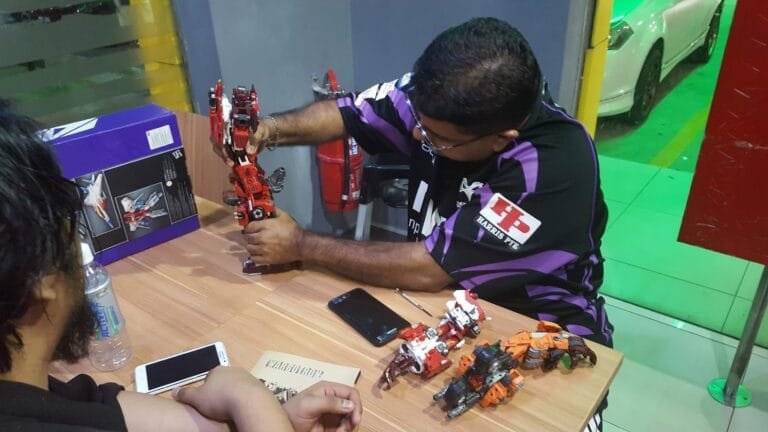
Kawamori is hailed by anime geeks for his Macross/Robotech series and his mecha designs, some of which became early Transformers toys.
The 40-year industry veteran says he is worried by the change in children’s behaviour resulting from too much screen time.

When Japanese anime master Shoji Kawamori first saw the HSBC headquarters in Hong Kong’s central business district 30 years ago, he immediately thought how the building, completed in 1985, was ahead of its time.
“It was very futuristic,” says Kawamori, through an interpreter, at Wan Chai’s Grand Hyatt, of the 180 metre (591 foot) tall steel and aluminium structure by British architect Norman Foster.
It’s not surprising the Transformers-like building caught his eye. Kawamori is a master of mecha anime, designs that involve giant armoured robots or machines, typically controlled by a person inside the robot, that have invaded popular culture from sci-fi flicks and comics to video games. In fact, it’s hard to think of a more quintessentially Japanese contribution to animation than the giant robot.
While anime geeks around the globe worship Kawamori most for creating the popular mecha anime series Macross (adapted to become Robotech in the West) in the 1980s, he really left his mark on the imagination of children worldwide as one of the original mecha designers for toys that would be included in Hasbro’s Transformers toy line.
Further global exposure came in 2001 when he made headlines for designing an updated version of Sony’s AIBO robotic dog, the ERS-220.
His latest anime series, Last Hope, released last year, is the first Japanese/Chinese co-production anime series to be streamed concurrently in China and globally on Netflix.
Kawamori was in Hong Kong last weekend to attend the C3 Anime Festival Asia, a celebration of Japanese popular culture – think manga, anime and cosplay. It is a culture with a huge fan base not just in Hong Kong and the region, but worldwide, especially in Europe and the US.
When Japanese anime master Shoji Kawamori first saw the HSBC headquarters in Hong Kong’s central business district 30 years ago, he immediately thought how the building, completed in 1985, was ahead of its time.
“It was very futuristic,” says Kawamori, through an interpreter, at Wan Chai’s Grand Hyatt, of the 180 metre (591 foot) tall steel and aluminium structure by British architect Norman Foster.
Chinese anime rising as country’s tech giants engage in cartoon arms race
It’s not surprising the Transformers-like building caught his eye. Kawamori is a master of mecha anime, designs that involve giant armoured robots or machines, typically controlled by a person inside the robot, that have invaded popular culture from sci-fi flicks and comics to video games. In fact, it’s hard to think of a more quintessentially Japanese contribution to animation than the giant robot.
While anime geeks around the globe worship Kawamori most for creating the popular mecha anime series Macross (adapted to become Robotech in the West) in the 1980s, he really left his mark on the imagination of children worldwide as one of the original mecha designers for toys that would be included in Hasbro’s Transformers toy line.
Shoji Kawamori was one of the original mecha designers for toys that would be incorporated into the Transformers toy line, including Optimus Prime.
Shoji Kawamori was one of the original mecha designers for toys that would be incorporated into the Transformers toy line, including Optimus Prime.
His latest anime series, Last Hope, released last year, is the first Japanese/Chinese co-production anime series to be streamed concurrently in China and globally on Netflix.
Kawamori was in Hong Kong last weekend to attend the C3 Anime Festival Asia, a celebration of Japanese popular culture – think manga, anime and cosplay. It is a culture with a huge fan base not just in Hong Kong and the region, but worldwide, especially in Europe and the US.
In China, tech firms including Tencent, Baidu and NetEase are battling for a slice of the huge US$220 billion global animation market, with cartoonists there winning fans by using traditional Chinese religious and cultural themes.
It’s all healthy competition, Kawamori says.
“In the past, animation in Japan was done in traditional hand-drawn ways but it was also outsourced to China and South Korea and now these countries have their own animation industries. For me, I see them as competitors as well as companions,” he says.
Kawamori, who was born in 1960 in the coastal city of Toyama, says his love for mechanical design started at a young age.
Credits: SCMP






